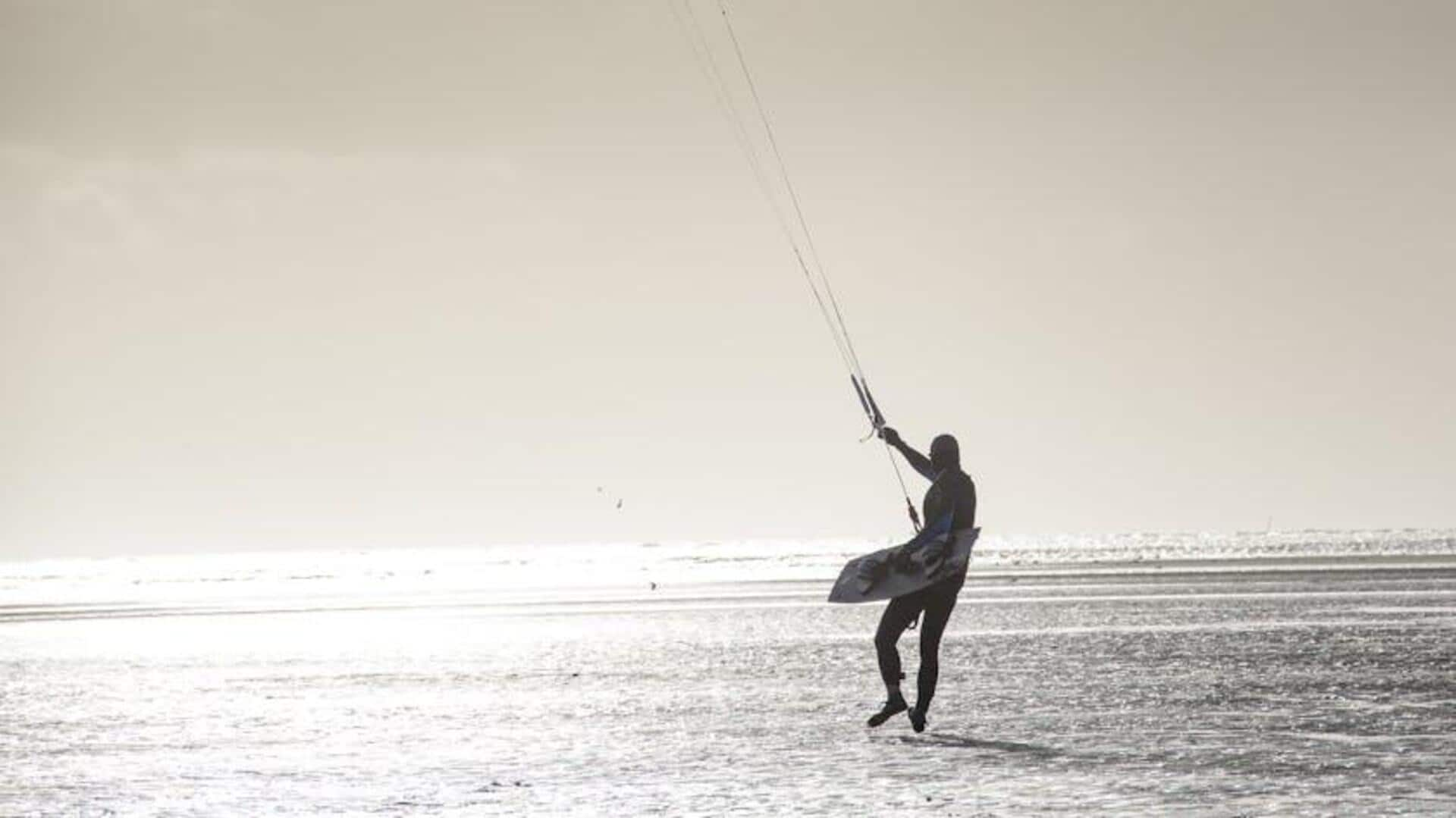
Kite surfing on Egypt's Red Sea coast
What's the story
Kite surfing is an exhilarating water sport that blends elements of wakeboarding, windsurfing, surfing, paragliding, and gymnastics into one extreme sport. And, Egypt's Red Sea coast is a global hotspot for kite surfers. It offers near-perfect wind conditions and stunning natural beauty. This article provides insider tips for planning your kite surfing trip to this world-class destination.
Seasons
Ideal seasons for kite surfing
The ideal time to visit the Red Sea for kite surfing is from March until November. This period offers the most reliable wind conditions, with speeds varying between 12 and 30 knots. Both air and sea temperatures are pleasant for extended sessions on the water. And, beginners may find the summer months more manageable with more consistent and less gusty winds.
Location
Choosing the right spot
Dahab and Hurghada are two of the most popular destinations for kite surfing along the Red Sea coast. Dahab provides a relaxed atmosphere with shallow waters perfect for beginners. On the other hand, Hurghada offers a lively nightlife scene and a wider variety of spots catering to all skill levels. Both locations have plenty of schools where you can take lessons and rent equipment.
Stay
Accommodation options
Accommodations in Dahab and Hurghada offer options for every budget. You can find simple hostels for around $20 per night, or splurge on a luxury resort for $150 or more per night. Many accommodations cater specifically to water sports enthusiasts, providing storage areas for equipment and convenient access to kite surfing locations.
Lessons
Learning kite surfing in Egypt
If you're new to kite surfing, it's essential to take lessons. Many schools along the Red Sea coast offer packages that include equipment rental. A standard beginner course lasts three days and costs start at $300. These courses cover everything from safety protocols and equipment handling to basic maneuvers and techniques for getting up on the board.
Tips
Essential tips before you go
Before heading out for kite surfing in Egypt, ensure to check wind forecasts and have travel insurance that covers extreme sports. Be mindful to respect local customs and dress modestly off the beach. Keep yourself hydrated, apply high SPF sunscreen, and adhere to safety guidelines provided by instructors during your sessions.